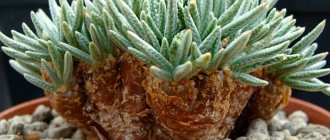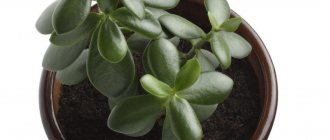The types of asparagus found in nature are numerous: according to the classification, there are more than 300 varieties of this plant.
Indoor flowers belonging to this family are easy to care for, used for landscaping the home and garden, and used in decorative flower arrangements.
What indoor asparagus looks like of different types and varieties: photos and names of varieties
Among the representatives of the asparagus family, a special place is occupied by edible varieties of asparagus, shown in the photo, which are grown for gastronomic purposes:
Today, for their aesthetically graceful appearance, plants are used for interior landscaping, creating original cascading ikebana flowers, arranging bouquets and other flower arrangements.
The huge variety of species and varieties does not allow us to unambiguously answer the question of what homemade asparagus looks like, since specific features and characteristics are always inherent.
However, general external characteristics characteristic of the vast majority of plants of this family can be distinguished:
- Herbaceous shrubs, lianas.
- Flexible stems.
- Leaf shoots are needle-shaped.
- Small flowers in inflorescences.
- Single-seeded decorative berries.
This homely, sophisticated asparagus flower with its lush green color will add freshness to any room and fill the atmosphere with coziness.
Modern breeding science knows more than 200 species of ornamental asparagus. However, not every species can be found in flower shops or in the collections of professional flower growers.
According to experts, no more than ten species are cultivated and grown indoors or in open ground.
For greater clarity, all descriptions of asparagus species are supplemented with photos and official names, which will help you understand in detail the specifics of each member of the family:
The most famous is the densely flowered asparagus ( Asparagus densiflorus ) - a powerful plant with sparse cladodes-shoots, its leaves are transformed into awl-shaped scales. The height of the bush is insignificant - only 45 cm, but due to the elongated shoots (more than one and a half meters), its width exceeds 6-7 m.
The leaves (or so-called phyllocladies) are small, scale-like. Once a year, the plant pleases its owners with flowering, represented by compact inflorescences of miniature white flowers. A week later, these delicate “fireflies” are replaced by round fruits of a noble burgundy color.
Breeders have developed excellent varieties of this asparagus:
"Myersii" - with distinctive shoots stretching upward.
"Sprengeri" - with characteristic long drooping branches.
's asparagus (Asparagus Meyeri) leaves are arranged much more densely in the form of a spindle. The herbaceous shrub is not large in size. Its height barely reaches 40 cm, but the branched shoots grow significantly in width - more than 5.5 m. This flower is popularly nicknamed “fox tail”, which is explained by the location of the ovaries, which gives splendor to each stem.
To figure out what this “fluffy” asparagus looks like, take a look at the photo, and you will certainly have associations with forest fur-bearing animals - after all, the “tails” in this case are shown in green color from the pot.
Crescent asparagus (Asparagus falcatus) is an excellent hanging plant that is easy to care for. It got its name due to the shape of the leaves, which resemble “sickles” with a rounded bend.
The dimensions of these slightly corrugated phylloclades are small: 5 cm in length and up to 2 cm in width. The distinctive properties of the plant are its rapid growth and cold resistance. Because of these features, this type is most often used to decorate verandas and glazed balconies, where the temperature is not always warm.
of pinnate asparagus (Asparagus plumosus) are especially elegant , which are wrapped in miniature thread-like leaves resembling scales collected in bunches.
During the flowering period, this type of indoor openwork asparagus produces tiny white flowers, which smoothly give way to dark blue berries. The fluffy, scale-like structure of the plant is widely used to decorate bouquets and ikebana flowers or to create interior partitions and decorative screens.
Just look at the photo of beautiful indoor asparagus species, and their sophisticated lace silhouette in a rich green color will certainly provoke the imagination to create a new decorative composition using them:
Along with indoor representatives, experienced gardeners grow garden specimens of the plant. The places where they grow can be open ground in summer cottages, greenhouses, and front gardens. Changeable summer weather with its characteristic slight coolness or drought is not an obstacle to the normal development of this flower.
The main garden species of asparagus shown in the photo is asparagus asparagus (Asparagus asparagoides var. myrtifolius).
For more than a decade, it has been widely used as decorative greenery in bouquets. Due to its unpretentiousness and beautiful appearance, many hybrid interpretations of it have been developed today.
A description of the varieties of asparagus with official names and photos will form a general idea of this wonderful representative of the flora:
Asparagus officinalis , popularly referred to as medicinal asparagus, is a tall herbaceous plant that can grow over 1.5 m in height. Branched thin stems bend from many sharp scaly leaves. During flowering, the plant is decorated with miniature amber flowers.
The next cold-resistant bush is Asparagus asparagus L. , which can often be found under the name white asparagus. This variety of asparagus is used for making medicines and also in the culinary industry. Externally, the plant has more powerful outlines than its decorative relatives. The height of individual specimens can be more than 2 m.
Green asparagus is considered a culinary variety of asparagus. A branched stem, small leaves, miniature flowers and dark blue oval fruits are its characteristic features.
The nutritious parts of the plant are considered to be sprouts, which are collected from May to June. The presence of a large amount of vitamins, fiber, and antioxidants was the main reason for growing this variety.
Description of the plant
The Asparagus flower (asparagus) belongs to the asparagus family. It has several hundred species, among which rhizomatous herbs predominate; subshrubs and even lianas are found.
The main distribution area is the tropical part of America, Africa, Asia. Representatives of the asparagus family can adapt to different climatic conditions, so today they are found everywhere. Some of them are edible and cultivated as agricultural plants.
The houseplant asparagus looks vaguely like a fern. The shoots are herbaceous, branched, elastic. The leaves are underdeveloped and scaly. In their axils sit needle-shaped branched branches, often collected in bunches - cladodes.
In indoor conditions, the plant rarely blooms. Small flowers of white, pale pink or cream color are collected in the axils of the leaves in small inflorescences; in some species they are located singly. They have a delicate pleasant aroma. Asparagus berries are poisonous.
Growing asparagus at home: light, temperature and soil
The indoor ornamental plant asparagus is one of the unpretentious and grateful representatives of the flora. It is enough to provide basic living conditions, and the flower will delight its owners with a luxurious bright green crown and sophisticated inflorescences.
Sun-loving shrubs feel comfortable on the western and eastern sides of the apartment. Since this location not only provides them with a lot of light, but also protects them from long-term direct exposure to sunlight. If the created interior composition with asparagus will look more harmonious in a southern room, then it is advisable to place it away from the window. From late spring to early autumn, such a flower can be left on open verandas or balconies, the only warning is to avoid heavy rainfall and drafts.
When growing gourmet asparagus in ordinary home conditions, there are no special temperature requirements. According to experts, the temperature should be normal room temperature, cooler in winter, but not lower than 10°C.
Therefore, in the hot summer at 25°C, the plant will feel uncomfortable, and the leaves may even dry out. In such situations, even an increased level of air humidity will not be able to restore the fading stems - they will have to be removed.
Air humidity: does not matter. However, if the flower grows in extreme dryness, it will soon turn yellow and dry out. To obtain a more saturated and bright color of the leaves, you should regularly spray this ornamental bush.
Particular attention should be paid to the quality and composition of the soil. Substrate: flower soil mixture with 1/4 loam. If you have experience in preparing the soil yourself, you can mix turf and leaf soil, and also add a small amount of peat and sand.
By creating such a “cozy” habitat, gardeners prevent situations in which asparagus gradually dries out, while the plant, with its thick openwork crown and rich green color scheme, will only touch and delight.
Features of cultivation
To successfully grow asparagus, home care involves following certain rules. However, even a beginner can do this. Growing rules will be the same for all types of plants
The main criterion is regular watering and the correct location. If you follow the recommendations for caring for indoor asparagus, it will decorate any room.
The soil
In any flower shop you can purchase a special substrate intended for plants of the asparagus family.
However, you can prepare the soil yourself at home. To do this, you should take equal quantities of leaf or greenhouse soil, as well as sand.
If possible, a small amount of forest turf or peat can be added to the resulting mixture.
Lighting
All crops belonging to the asparagus family are light-loving plants
In indoor conditions, asparagus should be placed in the most illuminated rooms. The best place would be windows that face the northeast or northwest side.
If you place the specimen on the north side in the shade, it will grow and develop poorly. You should also avoid exposing your indoor plant to direct sunlight.
Only Sprenger asparagus is allowed to be kept on a southern windowsill, as this variety tolerates the sun very well. Other specimens should be shaded if they are located on the south side.
Indoor plants located on the western or eastern window should be protected with tulle. Crops purchased in specialized stores, or after wintering, need gradual adaptation to lighting: from low to high intensity. In this case, it will be important to apply gradual shading.
Air temperature and humidity
Temperature is an important point when growing crops
Indoor asparagus will feel great at room temperatures from +15 to +25 degrees.
If the room is constantly hot, the perennial's stems will begin to dry out, which negatively affects the condition of the leaf blades. To avoid this problem, asparagus should be sprayed regularly.
It is important to observe not only the temperature regime, but also monitor the humidity. The tropical plant loves an increased rate.
Spraying is carried out throughout the year, since in winter the air in the room becomes too dry due to the heating devices being turned on. To increase air humidity, a flower pot can be placed in a container with sand for several hours. If possible, it is recommended to place a humidifier in the room with asparagus.
It would not be a bad idea to harden off a tropical plant periodically. In the summer, indoor asparagus is taken out to a loggia or balcony for several hours, gradually increasing the duration of its stay there to several days. But it is necessary to protect the hanging plant from drafts.
Watering
Aspargus in a pot
Asparagus needs abundant and frequent watering with the arrival of summer. However, care should be taken to ensure that moisture does not accumulate in the pot.
The ampelous flower is watered moderately, about 2-3 times a week. You should focus on the top layer of the substrate: it should have time to dry before the next watering. In winter, watering will be less frequent - once a week.
After the procedure, all excess water must be drained from the pan to prevent rot from forming in the root system. With the arrival of winter, the frequency of watering and the amount of water used is reduced.
For ease of watering, you can use special “Ol G” automatic watering devices.
Fertilizer application
The growing season for asparagus begins with the arrival of spring.
At this time, plants require additional feeding. Complex mixtures are used as fertilizer.
Fertilizing is applied once every 2 weeks. The procedure is carried out after watering, since moist soil absorbs all minerals much better.
Organic fertilizer should also be applied once in the summer. If this is not done, the leaves of the plant crumble, turn yellow, and new shoots do not form.
Foliar feeding is very useful for indoor asparagus. To spray the leaves of this plant, you can use the growth stimulator “Bud”. To prepare this solution, 1 g of the substance is diluted in 1 liter of water. After such manipulation, the shoots with leaf plates become more saturated in color, fresh and healthy in appearance.
Transfer rules
Transplanting aspargus
Caring for asparagus is simple, but care requires a mandatory transplant. Young specimens need it every year, because they grow quite quickly, and it becomes difficult for an overgrown root system to develop in a cramped pot. As for adult plants, they should be replanted once every 2-3 years.
If the transplantation procedure is not carried out at all, the tubers will crawl to the surface of the soil, and the crop will experience a lack of moisture and nutrients.
During transplantation, it is recommended to carefully examine the leaves, shoots and root system of asparagus. Thanks to this, it will be possible to identify diseases and pests in time, and then take appropriate measures.
It is best to replant indoor asparagus with the arrival of spring. At this time, the culture will gradually adapt to new conditions.
The asparagus pot should be a couple of centimeters in diameter larger than the previous one. The main feature of this tropical plant is that its greenery does not grow until the root system of the crop completely fills the entire pot.
Asparagus. Transfer
It is also important to know how to replant indoor asparagus. During transplantation, you must adhere to the following step-by-step actions:
- Moisten the soil
- Gently remove the asparagus from the pot.
- Carefully examine the root system, get rid of rotten roots and dry branches. You can cut off long protruding roots to allow new shoots to grow.
- Pour about 2 cm of drainage into a new pot. For this you can use expanded clay, small stones, broken bricks, and shells. Sprinkle the prepared substrate on top
- Place the plant in a pot, cover with soil
- Moisten the substrate
- Place indoor asparagus in a place that is not too lit for a few days so that it gets used to the new conditions.
You should pay attention to the fact that asparagus purchased at a flower shop also needs to be replanted. To do this, you can use the transfer method: without reducing the volume of soil in the root system and without getting rid of the old earthen lump, carefully move the plant into a new, larger pot.
Trimming
Aspargus branch
If desired, asparagus can be pruned to form a crown of a certain shape. However, you should pay attention to the fact that the procedure can slow down the development of the plant, since the flower spends energy and strength on the formation of new branches. But if you want to rejuvenate and give indoor asparagus a decorative look, then pruning is necessary.
With the arrival of spring, you can remove old and dried out unattractive shoots. The cut stems will not grow back, but this manipulation promotes the growth and development of young branches.
Winter care
In order for indoor asparagus to gain strength for the growing season, it must rest in winter
The dormant period of this plant begins in mid-autumn and ends with the onset of March. To prevent the leaves from falling off, it is recommended to keep asparagus in a cool room at this time, where the air temperature is no more than +12 degrees. The room should be light enough.
During the dormant period, the crop is not fed, and watering is carried out a maximum of once a week. If it is not possible to provide such conditions for a tropical specimen, then it should be sprayed. Thanks to this procedure, you can prevent the appearance of spider mites, which more often attack indoor plants if they are kept in dry air.
Proper care of indoor asparagus
Proper care of indoor sophisticated asparagus is possible even for novice gardeners, since minimal knowledge and little effort will delight you with excellent results.
Proper soil irrigation is the key to healthy and active growth of the green “pet”. Watering: constant moderate humidity. But it is worth considering the seasonality and cycles of life processes in the plant. Therefore, abundant and frequent irrigation should be in summer, and moderate in winter, when the flower is dormant. It is better to use the bottom watering technique, which allows you not to harm fragile trunks and leaves, and accumulate excess moisture in the trays.
It is important to choose settled water at room temperature as a liquid for such procedures. Spraying in hot and dry weather will be beneficial for the general condition of the bush, which should be done in the early morning or in the evening.
A significant point in caring for the decorative asparagus flower in the usual home conditions is proper and high-quality fertilization of the soil. Such feeding should be carried out weekly in the summer, and once every 4 weeks in the winter. When choosing fertilizers, you should give preference to universal complex mineral mixtures, which can be periodically replaced with weakly concentrated organic additives. Important! It is sensitive to chemicals, so it is better not to experiment with unverified manufacturers of mineral fertilizers.
Watering and humidity
The plant does not require abundant watering, but aridity also harms it: the leaves become yellow and eventually dry out. Therefore, watering should be moderate, so that a dried earthen lump does not form.
In the cold season, the frequency of watering can be reduced, but the soil should not be allowed to dry out. Periodic moistening of asparagus leaves will be beneficial.
What to do if the decorative asparagus turns yellow and crumbles?
Despite the unpretentiousness and hardiness of asparagus, when growing it, inexperienced gardeners may encounter various diseases and problematic situations. Among these are possible:
- Spots on leaves.
- Dark edges.
- Shedding and yellowing of foliage.
- Pale color of the leaves.
- General wilting of the flower.
Each of the listed unpleasant cases has its own causes and methods of “treatment”.
So, in order to determine what to do when decorative asparagus turns yellow and crumbles, you need to identify unfavorable factors and eliminate them. In some situations, this will be enough to completely heal the damaged flower.
Hot temperatures and increased dry air are contributing factors to wilting and yellowing of the foliage of the bush. Therefore, the solution here involves a forced decrease in temperature and an increase in humidity using traditional methods and special devices.
An alternative solution would be to change the location away from the switched on battery or heater.
Healing properties of asparagus
The biological and chemical composition of all representatives of the asparagus family is rich in vitamins and mineral salts, amino acids and flavonoids, which are responsible for the functioning of enzymes. Chinese traditional medicine has long used this plant to treat many diseases. Dried roots are used as an antibacterial, anti-inflammatory, diuretic, and antiseptic. They treat stomach and lung diseases.
Research in recent years indicates that various parts of asparagus contain antitumor substances.
Dry roots are used to prepare remedies for the treatment of the nervous system, diabetes, multiple sclerosis, and migraines. They have the property of cleansing the body of various toxins.
Medicines containing asparagus should only be prescribed by a qualified doctor.
Asparagus is a beautiful ornamental plant with lush greenery. It is used for landscaping and looks good in any position - horizontal, vertical and even cascading. Looks especially impressive in hanging baskets and flowerpots. Landscape designers decorate terraces and cozy courtyards with this representative of the flora. Florists use openwork asparagus branches to decorate bouquets and flower arrangements. Decorative asparagus creates a favorable aura in the room. It is believed that it protects the house from troubles.
Why do indoor asparagus leaves turn yellow, dry out and fall off, what to do in such situations?
The answer to the question of why the thin leaves of exquisite asparagus turn yellow may be excessive exposure to bright sunlight, as a result of which the plant develops a burn and characteristic yellowness.
Dry soil is another reason why the attractive indoor asparagus flower turns yellow. The frequency and intensity of water procedures should be reconsidered. However, you shouldn’t overdo it here either, since excess moisture contributes to rotting of the root system, which leads to wilting and death of the flower.
Therefore, it is important to find the “golden mean” in the watering regime in order to achieve a healthy green shine of stems and leaves.
Beginners often wonder why homemade asparagus dries out, when the answer may be quite simple - lack of lighting. In such cases, the course of treatment is elementary and involves changing the location of the flower pot with greater intensity of sunlight. As for dried branches, they should be cut off, since they cannot be “restored” and only spoil the appearance of the indoor “handsome”. By following these recommendations, even a beginner can ensure that the flower will soon delight you with new succulent shoots.
The reason why the bright green asparagus leaves turn yellow and fall off may also be due to harmful insects, which, by parasitizing, disrupt the normal life cycles of the plant. Among the pests of this plant, the most frequent “guests” are:
Aphid.
Spider mite.
Shield.
Aphids, which appear on an ornamental bush after “walks” in the garden in the summer, not only deplete it, but also cause the leaves to dry, wither and fall off. The only way to “expel” these pests is to treat them with special insecticides and provide comfortable growing conditions for the bush to renew lost “strength”.
Among these modern drugs, the most effective will be:
- "Agravertine".
- "Confidor".
- "Etisso."
- "Talstar."
- "Bazudin."
In a situation where asparagus is left for a long time in a dry, poorly ventilated room, there is a high probability of spider mites appearing. These parasites, feeding on the juice of the stems, deplete the plant, as a result of which the leaves of indoor asparagus wither and turn yellow. The question of what to do in such situations and how to deal with uninvited “guests” is one of the most frequently asked by beginning gardeners.
As a treatment, it is worth spraying the crowns of the bush with a concentrated solution of Actellica, and subsequently, for prevention, carry out irrigating procedures with warm water, covering the soil.
Parasitism by scale insects may also explain why asparagus leaves suddenly turn yellow. The list of what to do with this problem will be similar to the actions when fighting spider mites. However, you should first clear the stems of insects, which resemble brown convex plaques. An alternative folk method of getting rid of such pests can be a soap solution, but the difficulty will only lie in its subsequent washing off by repeated spraying with clean water.
Experienced flower growers, having analyzed the habitat and basic care conditions, can immediately determine the reasons for the deterioration in the “well-being” of the home “lace” bush. And this is already a large part of the path to full recovery and its active growth.
Pest and disease control
Asparagus rarely get sick, and in 99% of cases this is due to improper care. It drops its leaves due to too much light or dry air. Harsh direct rays on a hot day may cause burns and yellow edges. The only parasite found is the spider mite, which can be treated with standard insecticides or folk remedies.
The procedure for transplanting asparagus at home
An important step in the process of growing ornamental asparagus is its proper replanting, which should be done if necessary.
There are several situations for which this procedure must be carried out:
- After purchasing in a store.
- The flower has “outgrown” the pot.
- Changing the soil to a more fertile one.
- There are pests in the soil.
In addition, according to experienced gardeners, an adult plant that has reached the age of five must be replanted regularly at least once a year. This will have a beneficial effect on the active growth and development of the green “pet”.
The process of transplanting decorative asparagus in familiar home conditions is not particularly complicated, so even a beginner can perform it correctly. The entire sequence of the procedure covers the following steps:
- Choosing a new pot.
- Preparation of nutritious soil.
- Preparing drainage for the container.
- "Migration" of the bush.
- Careful flower care.
The new container in which asparagus will grow should be slightly larger than the previous one. The first obligatory layer in the pot is drainage, which performs a critical function for normalizing the level of moisture in the soil.
Particular attention must be paid to the preparation of the substrate, since it is its composition that will largely affect the active growth and development of the flower, or will lead to their slowdown. For inexperienced gardeners, it is better to use a universal mixture, which is available at any flower shop.
And those who understand the technique of preparing the substrate can get it by mixing leaf soil, humus and sand.
After carefully transplanting a flower to a new “residence,” it is important to carefully and attentively care for it for the first two weeks, after which you can add small doses of fertilizer to the “diet” and use water “baths” for the leaf crown. It is better to transplant in the spring, when the plant is at the stage of active growth.
Landing algorithm
They try to work with rooted cuttings, seedlings or parts of a bush in the spring. It is best to finish planting before the active growing season begins: from the end of February to the end of March. If necessary, work is carried out until mid-summer.
Purchased asparagus bushes should be transplanted into a new pot and fresh substrate as soon as possible. It is acceptable to leave the plant in the transport soil for just a few days to adapt and undergo quarantine.
A drainage layer should be prepared in the asparagus pot.
Planting process:
- A pot for asparagus is selected taking into account the fact that its above-ground part will not actively develop until the roots have mastered the entire soil. For rooted cuttings, the first container should have a volume of no more than 700 ml.
- Drainage is placed at the bottom of the pot: pebbles, broken bricks, perlite or pieces of polystyrene foam.
- Sprinkle a little substrate, covering the drainage, and then place the seedling in the center of the pot.
- Add soil little by little until it covers the roots and fills the pot to within 1 cm of the rim.
- Do not fill the container completely with soil, otherwise the growing roots will push it out of the pot.
At the end of planting, water the asparagus abundantly, wait until it shrinks, and add the missing soil. At first, the plant should be protected from direct sunlight, allowing it to adapt to new conditions.
Do I need to prune asparagus and how to prune it?
Many amateur gardeners are wondering whether it is necessary to periodically trim overgrown asparagus, and whether such manipulation will be useful. This procedure is necessary because it can help achieve better aesthetic results and increase the level of decorativeness of the flower.
It is worth pruning indoor asparagus in the spring. It is then that the plant has enough strength to renew and quickly replace dried out old stems. After removing the “bald” branches, the flower actively produces young shoots, which give the bush greater splendor and attractiveness.
Requirements for transplantation
To replant, you need to trim off excess root structures and shoots. Replanting is carried out every year, as asparagus grows quite quickly. This is why the new asparagus “house” should have a larger volume.
If you remove some shoots, their growth will accelerate significantly: new branches will replace the old ones.
Growing ornamental asparagus from seeds at home
Creating indoor greenhouses and decorative compositions in the interior is impossible without mastering the technique of propagating sophisticated asparagus in familiar home conditions. However, there are no difficulties in this process, and even a lack of experience in floriculture will not be an obstacle to achieving excellent results.
In practice, the following reproduction methods are used:
- Seeds at soil temperatures from 20 to 25 ° C.
- Young cuttings.
- Dividing the bush.
Each technique has its own advantages and implementation features, once you understand them, you can easily grow a luxurious, lush bush with lacy branches and elastic stems.
The most durable of all alternative methods is the process of propagating asparagus from collected seeds from a mature bush at home. Planting material is formed in the ripened fruits of the flower, usually in winter. And here the procurement of seeds should not be put on the back burner, since their greatest productivity occurs in the first days after collection.
First you need to place the seeds in a prepared mixture of peat and sand, which should be regularly moistened and covered with glass or polyethylene. It is important that the seeds are covered with soil; they germinate in the dark.
The germination rate of seedlings depends on daily soil ventilation, temperature conditions and proper irrigation. It is necessary to maintain the same temperature, trying not to exceed +21...+22°C.
Condensation that periodically appears on the glass indicates the need to “refresh” the air. Therefore, it is worth raising the insulating elements and allowing the soil to fill with oxygen. This vital action will help speed up the growing of ornamental asparagus from collected seeds at home and give young seedlings energy for germination.
In these comfortable conditions, the first shoots will appear within 4 weeks. As soon as the seedlings reach 10 cm, they can be planted in separate miniature pots with soil, which is the same in composition as for adult relatives.
Growing elegant asparagus using seeds will require a little patience, since only after six months can you evaluate the results of your efforts.
Reproduction methods
Growing Aspargus
There are three ways to propagate asparagus at home. The most experienced gardeners choose a method depending on the plant variety. For example, Meyer, Sprenger, and pinnate asparagus are recommended to be grown from seeds.
The fact is that these species have very good germination, the root system develops quickly, and new shoots grow green in a short period. But some gardeners do not want to wait long, so they use the division method for propagation. This method is suitable for those varieties that quickly restore strength after such a procedure.
Dividing the bush
It is not difficult to replant and propagate homemade asparagus. The simplest and fastest method of propagation is dividing the bush. This method must be used when replanting the plant in the spring.
The root system of an overgrown flower is divided into several parts, each of which is subsequently planted in a separate pot. Tubers and shoots must be sprinkled with substrate at the same level as before transplanting. Upon completion of the procedure, the soil is moistened.
New specimens are placed in a shaded room where the optimal air temperature is no more than +20 degrees. The substrate is regularly moistened, but the soil should not become sour. After a month, the plant will get stronger, after which it can be moved to a bright room or on a windowsill.
This replanting method is best used for old perennials, which become rejuvenated after such manipulation.
Seeds
When propagating asparagus from seeds, you need to be patient.
Seedlings can be purchased at a special store, or you can collect them yourself. To do this, they should be extracted from the fruits of an adult plant. But for them to form, artificial pollination is required.
Germination can persist for several years if the seeds are kept in a dry room. Before planting, the seed is soaked in water for a couple of days.
The seeds go deeper into the substrate no more than 1 cm. The soil mixture should be light and fertile. The soil should be moistened first.
After sowing, the seedlings need to create greenhouse conditions. To do this, cover the container with seedlings with glass or plastic film. Periodically, a homemade greenhouse should be ventilated and the soil moisture should be monitored.
It is recommended to use spraying instead of watering. If all conditions are met, seedlings should appear in a month. When the height of the new seedlings is 10 cm, they need to be planted in separate small containers.
You can grow indoor asparagus from seeds both in summer and winter. However, the best result achieved will be if sowing was carried out in early March.
Cuttings
Asparagus cuttings
Asparagus cuttings are considered to be an ineffective propagation method. This planting material is quite difficult to take root. But it’s still worth trying the method.
To do this, you must follow a certain step-by-step procedure:
- In spring, cut off shoots from an adult specimen, the length of which should be about 10 cm
- Fill the seedling pot with moistened sand
- Place the cut shoots for rooting in a moist substrate, deepening each branch by about 1.5 cm
- Create greenhouse conditions for the seedlings: place the specimens in a warm room, cover the top of the container with a jar or half a plastic bottle
- The cuttings must be sprayed and ventilated daily.
Practice shows that rooting of cuttings requires at least 2 months. If the root system has developed, then the seedlings can be planted in separate containers.
A drainage layer is first placed in new pots. It is recommended to use a universal substrate for planting.











